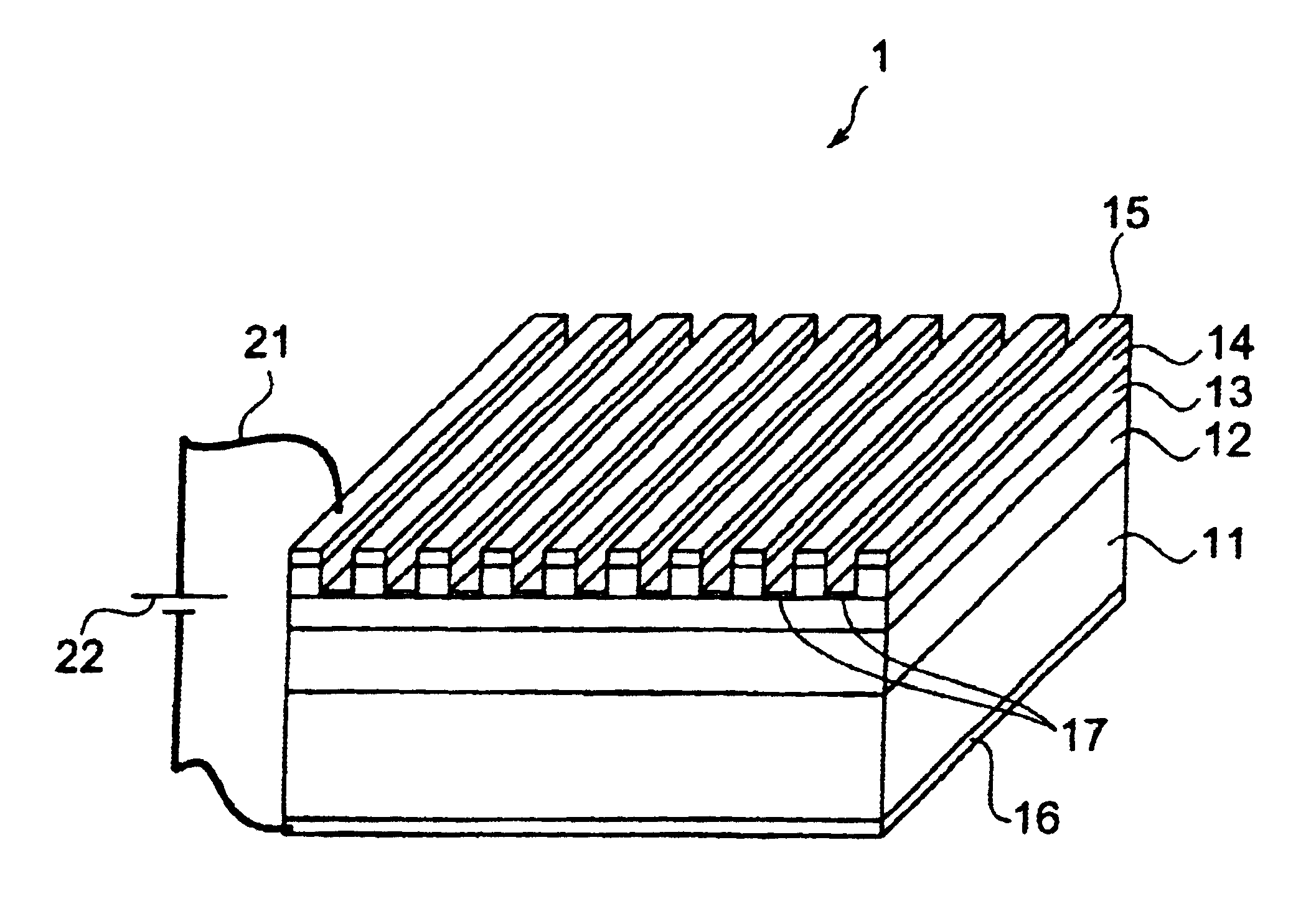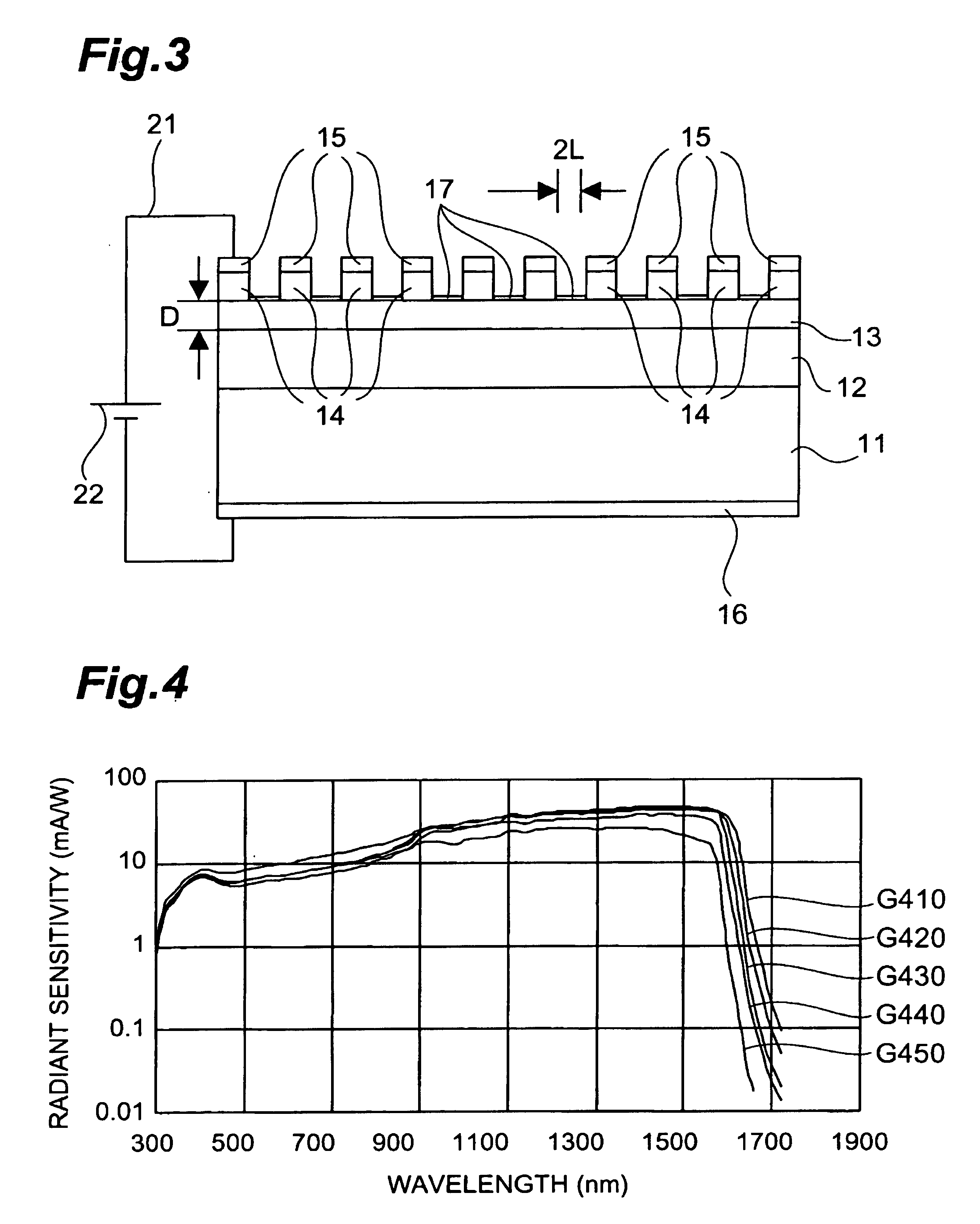Photocathode
a photocathode and cathode technology, applied in the field of photocathodes, can solve the problems of reducing the radiant sensitivity, limiting the cooling of the photocathode, and the photocathode disclosed in the reference 1 has a problem at low temperatures, so as to prevent the degradation of the signal to noise ratio s/n, reduce the temperature of the photocathode, and good radiant sensitivity
- Summary
- Abstract
- Description
- Claims
- Application Information
AI Technical Summary
Benefits of technology
Problems solved by technology
Method used
Image
Examples
Embodiment Construction
[0030]Embodiments of the invention are described below in detail with reference to FIGS. 2-9.
[0031]FIG. 2 is an entire perspective view of an embodiment of a photocathode according to the present invention, and FIG. 3 is a cross sectional view on the photocathode shown in FIG. 2.
[0032]As shown in FIG. 2, a photocathode 1 according to the present embodiment comprises a substrate 11 composed of p-type InP and having a carrier density of 1018 cm−3 or higher. A light absorbing layer 12 is formed on the upper layer of the substrate 11. The light absorbing layer 12 is composed of p-type InGaAs and has a carrier density of 1016 cm−3 and a thickness of 2 μm.
[0033]An electron emitting layer 13 for accelerating photoelectrons towards the emitting surface is formed on the upper layer of the light absorbing layer 12. The electron emitting layer 13 is composed of p-type InP and has a carrier density of 1016 cm−3 and a thickness of 0.7 μm. A contact layer 14 is formed on the upper layer of the el...
PUM
 Login to View More
Login to View More Abstract
Description
Claims
Application Information
 Login to View More
Login to View More - R&D
- Intellectual Property
- Life Sciences
- Materials
- Tech Scout
- Unparalleled Data Quality
- Higher Quality Content
- 60% Fewer Hallucinations
Browse by: Latest US Patents, China's latest patents, Technical Efficacy Thesaurus, Application Domain, Technology Topic, Popular Technical Reports.
© 2025 PatSnap. All rights reserved.Legal|Privacy policy|Modern Slavery Act Transparency Statement|Sitemap|About US| Contact US: help@patsnap.com



